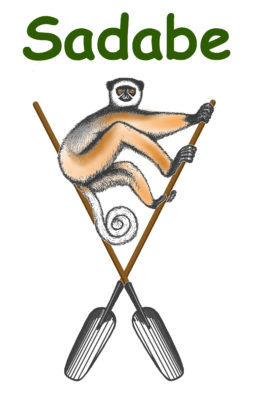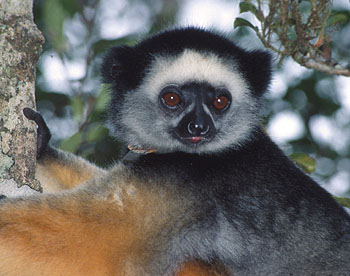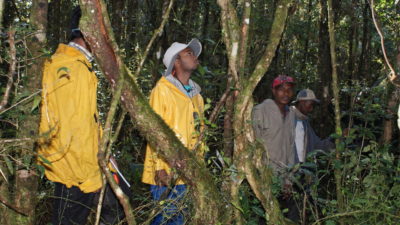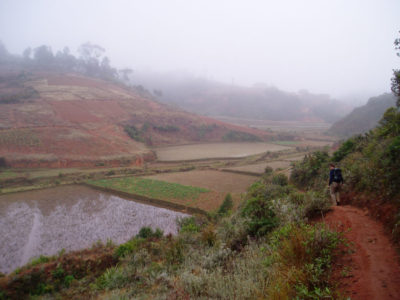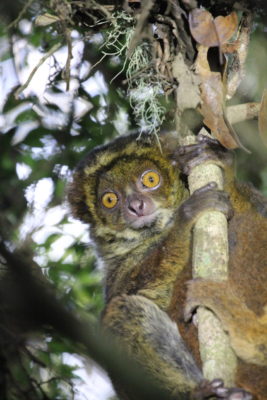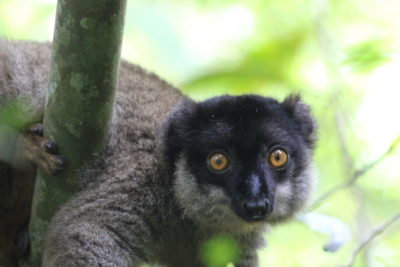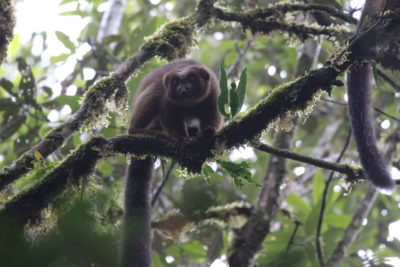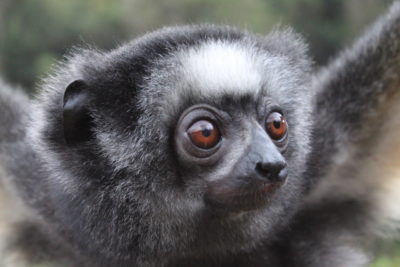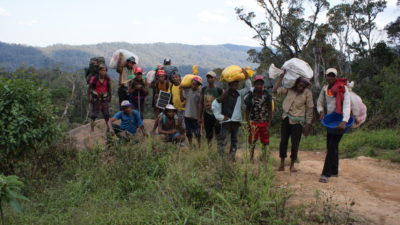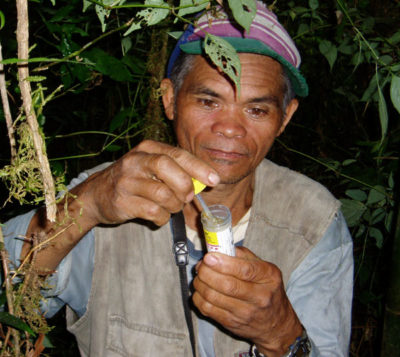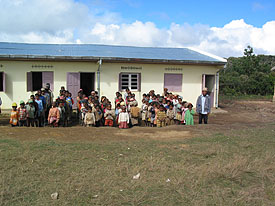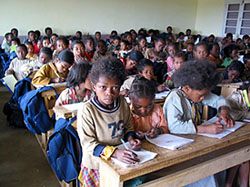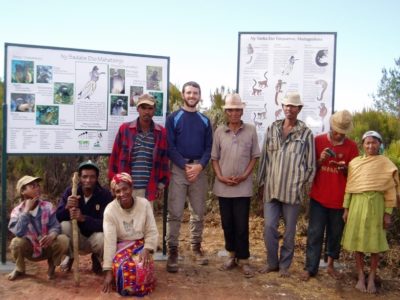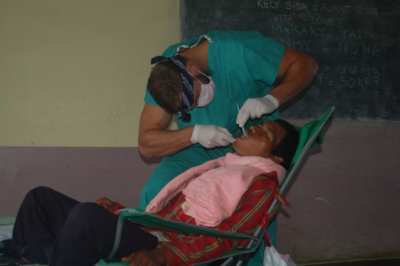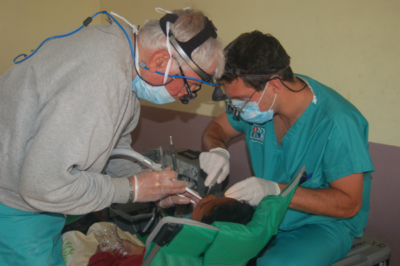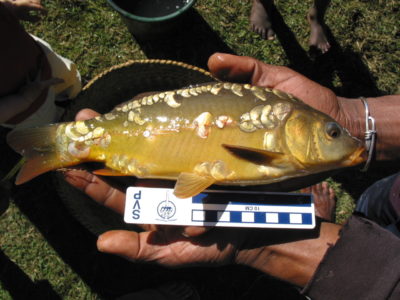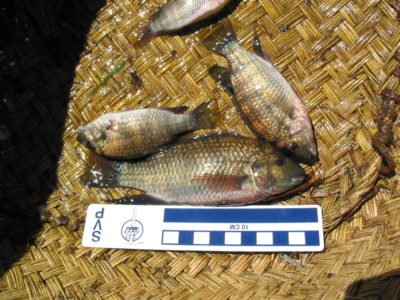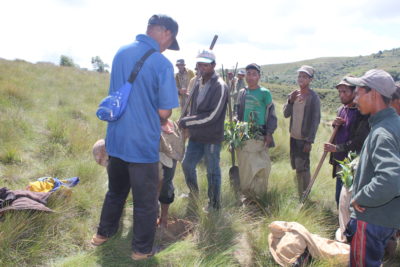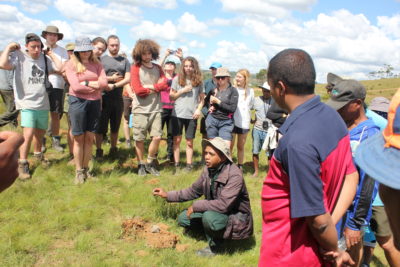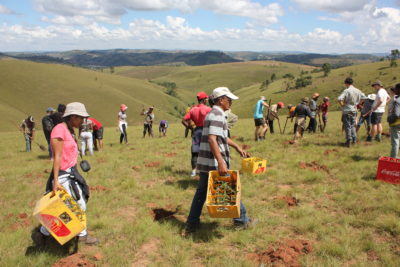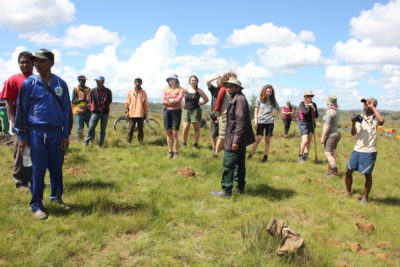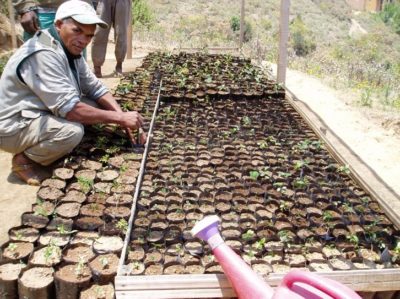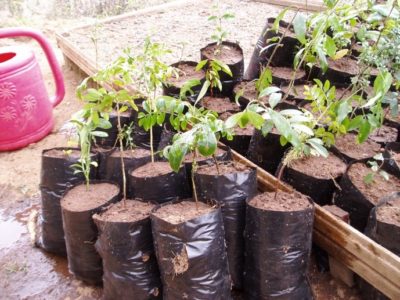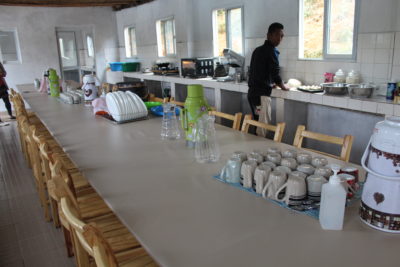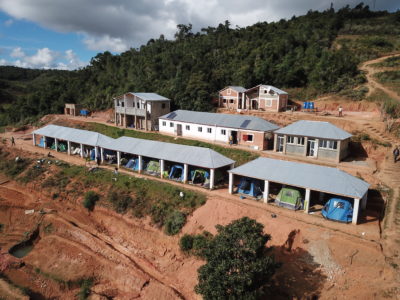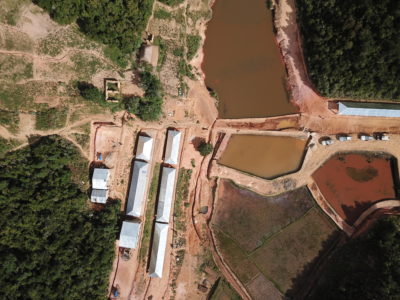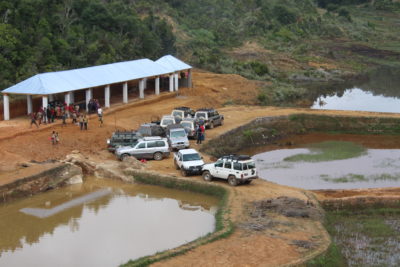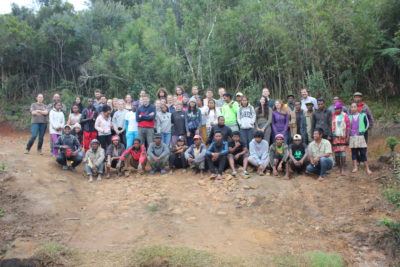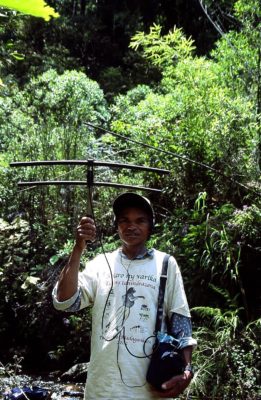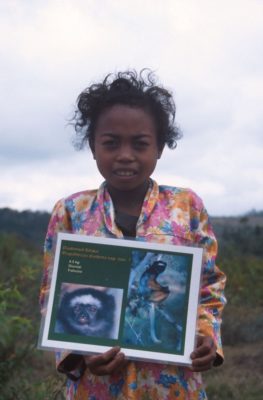May 2019 is dedicated to NGO Sadabe. We interview Jean-Luc Raharison, Executive Director of the NGO Sadabe, who tells us all about their important work and how we can support them.
Tell us about the history of NGO Sadabe.
In 2000, we started our research at Tsinjoarivo classified forest as Phd Students from Antananarivo University and Stony Brook University. We worked for the NGO ICTE/MICET.
Tsinjoarivo Forest has high biodiversity richness and is bio-geographically unique.
Tsinjoarivo contains the most intact forest that remains in the Vakinankaratra region. However, Tsinjoarivo forest has faced conservation problems for many decades. The forest is threatened by commercial and illegal wood exploitation to produce a transport locomotion called “sarety”. This exploitation influenced the local people’s livelihoods. From 1975, local people were making “tavy” and producing traditional alcohol. Local people depend on these natural resources. Facing this situation, we began our research on 2000 and focused first on Propithecus diadema (diademed sifaka) which is called “Sadabe” in Tsinjoarivo.
Previous research by Goodman and Zicoma (2000) showed that Tsinjoarivo forest is unique because of its high levels of plant and animal diversity compared to others highlands regions (Andringitra and Ambohitantely). During the presentation of the “Durban vision” in 2002 in South Africa, Dr Mittermeier R. suggested that the Tsinjoarivo forest should be a New Protected Area. Becoming a Protected Area is one of the main strategies that will help conserve, protect and manage this threatened biodiversity.
However, because we lacked funding, we weren’t be able to proceed with the creation of the new protected area at that time. Thus, we acted as T.F.F.P : TSINJOARIVO FOREST FRAGMENT PROJECT.
In 2004, we created the SADABE team, which recognizes that human health and development depends on natural ecosystems, while the conservation of biodiversity depends on human decisions.
If we remember these interdependencies, we have a chance to preserve biodiversity while promoting sustainable development.
“SADA” means multi-colored and “BE” means big. “Sadabe” means: complex conservation and development problems require multifaceted solutions. This is our philosophy and it is based on preserving the incredible animals that replace “Sadabe” (Propithecus diadema) through combining research & conservation and development instead of working in parallel.
Promoting the Coexistence of People and Wildlife at Tsinjoarivo
Sadabe works to increase people’s awareness of biodiversity conservation through research, environmental education, and improving the livelihoods of the communities near our project sites. We seek to develop innovative ways to promote the coexistence of people and wildlife at Tsinjoarivo, and everywhere humans and wildlife come into conflict.
In June 2009, TFFP became ONG SADABE, in French means “Service d’Appui pour le Développement Autonome de la Biodiversité et de l’Écotourisme” or Support Service for the Self-Development of Biodiversity and Ecotourism”.
We will have a greater chance of conserving the remaining ecosystem, if we can find the synergy between peoples’ life and wildlife and Promoting the Coexistence of Humans and Wildlife.
Ours Sponsors of Research at Tsinjoarivo are: Conservation International (Margot Marsh Biodiversity Foundation), Primate Conservation Inc., National Geographic Society, Stony Brook University, NSERC, St. Louis Zoological Park.
Where is NGO Sadabe located?
NGO Sadabe is headquartered in Antananarivo. Our project sites are located at Tsinjoarivo Forest.
Which lemur species do you work with?
Our surveys, plus local observations, show that this intact forest contains the following lemur species:
Diademed Sifaka (Propithecus diadema), Brown lemur (Eulemur fulvus fulvus), Red-bellied lemur (Eulemur rubriventer), Gray Bamboo lemur (Hapalemur griseus), Eastern Woolly lemur (Avahi laniger), Weasel Sportive Lemur (Lepilemur mustelinus), Greater Dwarf lemur (Cheirogaleus major), Rufous Mouse lemur (Microcebus rufus), and Aye-aye (Daubentonia madagascariensis).
How does NGO Sadabe help lemur conservation?
Our activities has classified into three main parts: Research, Community Development, and Reforestation.
Research
Diademed Sifakas
Our research activities are promoting conservation participative of local communities. Since 2000, we censused forest fragments in the Mahatsinjo region and continuous forest in the Ankilahila region. At this period, our research focused only on P. diadema and we located seven P. diadema groups, and documented a previously unrecognized degree of pelage variation, including the existence of all-black individuals.
In November 2002, in collaboration with Dr. Ken Glander, we captured and marked P. diadema individuals within four study groups, and collected tissue samples and morphometric data. Two of these groups were found in the forest fragments at Mahatsinjo, and two were found within the continuous forest at Vatateza. These groups were habituated during all-day follows during December.
Botanical Research
We also performed botanical inventories in all 37 forest fragments at Mahatsinjo, in collaboration with botanists from Ranomafana National Park. Since 2004, we have been monitoring the four P. diadema study groups at Tsinjoarivo. We now have more than 5 years of data, and preliminary analyses suggest important demographic differences between fragment and continuous forest groups.
Parasites of Lemurs
Our part of research focuses on parasitology. In fact, the parasites of lemurs in the wild remain understudied, and even basic questions such as species richness and host specificity remain poorly known. Starting in 2004, in collaboration with Prof. RABETAFIKA Lydia of the University of Antananarivo we have collected fecal samples from Diademed sifaka study groups in order to document the diversity of their parasites, and how infection rates change across seasons and habitats. Also, from August 2006 to July 2007, our research teams collected feeding data and samples of food items for all four P. diadema study groups.
In November 2006 and November 2007, we trapped Cheirogaleus and Microcebus at Mahatsinjo and Vatateza, in collaboration with Marino Blanco of the University of Massachusetts. Preliminary results show that Cheirogaleus diversity is higher than expected: animals at Vatateza resemble C. major, but animals at Mahatsinjo are morphologically distinct and resemble the poorly-known species C. sibreei, which is of great conservation concern.
Community Development
Education: School Presentations, Educational Signage, and School Building
In 2002-2003, our research teams made monthly visits to local schools at the Mahatsinjo and Vatateza field sites. We forged relationships with the students and teachers, gave presentations highlighting the region’s unique biodiversity, introduced our research project and methods, and offered instruction in English language. In 2002, we printed 2000 brochures (1000 in Malagasy, 1000 in English) highlighting the lemurs of Tsinjoarivo. These were illustrated with drawings by Stephen Nash of Conservation International and encouraged awareness of lemur diversity and conservation.
Our education activities focus also on stopping animal hunting in the wild. In 2004, we installed five permanent educational plaques: one at Tsinjoarivo town center, two at the research site at Mahatsinjo, and two and the research site at Vatateza. The first plaques, “Ny Varika Eto Tsinjoarivo”, gave details about all lemur species, highlighting their ecology, behavior and uniqueness. The additional plaques “Ny Sadabe Eto Mahatsinjo” and “Ny Sadabe Eto Vatateza”, gave details of local groups of sadabe (P. diadema), including their ecology, diet and behavior.
In 2004-2005, we collaborated with the Madagascar Ankizy Fund to build a school. The new school, Sekoly RAH King Mahatsinjo, was built during 2004 and inaugurated in 2005. It is maintained by the Madagascar Ankizy Fund, which pays the salary of four teachers. Inscription is free, and approximately 200 students from Mahatsinjo and nearby regions benefit from this free, high-quality education. The Ministry of National Education and Scientific Research recognized the RAH King. Eventually, this school will become an Ecole Primaire Publique (EPP) and management will gradually be transferred to CISCO.
Training and Capacity Building
Starting in 2000, we have trained 11 local people in research techniques. They have gained skills in botanical inventories, phenological monitoring, behavioral observations, and lemur census techniques. Training has also including instruction in English and French. We have also trained our three core senior guides in data recording, and these three guides can now work autonomously in data collection. This will aid in the career development of people who wish to become tourist guides.
Health
Medical and dental care is extremely limited in Tsinjoarivo commune. The nearest doctor is located at Tsinjoarivo (up to 15 km away from the rural villages) and the nearest dentist is in Ambatolampy (approx. 75 km away). During July 2007, our teams hosted a Madagascar Ankizy Fund dental mission at Mahatsinjo, held at the Sekoly RAH King. The team included one dentist and professor (Dr. Laurence Wynn) and five dental students (four from New York, one from Madagascar), plus a small support staff.
Promoting Livelihoods of Local People
We work to help local communities improve their incomes through providing training on new agricultural and farming techniques. For this, we work in joint collaboration with government local services. Since 2012, we have been helped local people on fisheries, rabbits and bee-keeping. On 2017, we have trained local farmers on chicken and cow-breeding with the government local service called “CSA”. We work also in collaboration with FIFAMANOR, Malagasy Research center on agriculture to provides new seeds to local farmers.
Reforestation
In July 2005, we established the Mahatsinjo Reforestation Initiative, funded by Conservation International. In collaboration with the Direction des Eaux et Forêts office in Ambatolampy and with the agreement of the local people at Mahatsinjo, we delimited 12 areas for reforestation. We engaged local people at a series of meetings in order to integrate our reforestation efforts with local needs, and gain the support of the local people.
Areas chosen for reforestation included strategic connections between isolated forest fragments, and were chosen so as to reduce the impact on local agricultural production. The total number of trees planted was more than 55,000, and the project has provided full-time employment for one resident of Mahatsinjo and part-time employment for more than 40.
What are some of NGO Sadabe’s recent achievements?
Creation of New Protected Area at Tsinjoarivo Forest
Our main recent achievements are the obtention of permits from different services to creating the New Protected Area at Tsinjoarivo forest. On last January, 11 2019, we have done a workshop with SAPM commission about the temporary protection status of the forest. We are waiting to receive the definitive protection status.
Reforestation
By the end of October 2018, we transplanted tree nurseries which belong to VOI and local people in the reforestation area.
Center of Education for Environment and Sustainable Development
Another big achievement is also the building of some infrastructures of the Center of Education for environment and sustainable development. We have built: 1- one big main room for different needs, 2- a small room for a lab 3- guest rooms and 4- Documentation center, 5- Attraction Center, 6- fish farming.
Study Abroad Courses
The exchange knowledge course called “Study Abroad” which is a joint collaboration between the university of Antananarivo and University of Westwern England, Bristol was done with 30 teachers and students from Bristol and 17 from the university of Antananarivo.
What are some goals and expectations that NGO Sadabe has for the future?
Parasitology
We will work on continuing research on parasitology. Specifically, we will test whether nutritional stress in forest fragments exacerbates parasite infections. Analyses are ongoing, and these data will form the basis for Raharison’s doctorate. For the future Research, in collaboration with Dr. Randall Junge of the St. Louis Zoo, we will examine the relationships between habitat disturbance and physiological indicators of health, specifically body mass, morphometrics, baseline bloodwork (hematology, serum biomedical profile, and nutrition analysis), and ectoparasite infection.
Education
In terms of education, we are planning to build a school for teenagers called CEG at Mahatsinjo to avoid early marriage among young people.
Eco-tourism and Alternative Livelihood Projects
Also, we have already helped local people at Mahatsinjo form a legal association (“Imaintso an’Ala”), which will be responsible for co-ordinating tourist visits. The development of these local skills will be crucial in: (1) facilitating future research, (2) developing ecological monitoring programs for the protected area to be developed at Tsinjoarivo, and (3) ensuring the success of the ongoing ecotourism initiative.
We are working to find a way to provide rain using smart climate agriculture to improving local income through alternative livelihood projects.
Complete Protection Status for the Tsinjoarivo Forest
Finally, our main goal for the future is the obtention of definitive protection status to Tsinjoarivo forest.
Do you have volunteer opportunities at NGO Sadabe ?
Since 2000, there were many Malagasy and foreigners’ volunteers in Tsinjoarivo forest. Mahatsinjo region is a very isolated area and any volunteers working and involved must be passionate about nature and conservation. We always seek volunteers to work with us.
What do you need donations for right now ?
There are different ways to help us, but the most urgent is supporting education and awareness to promote change of local people’s behavior and promote their motivation to apply new alternative livelihoods.
How to Help

